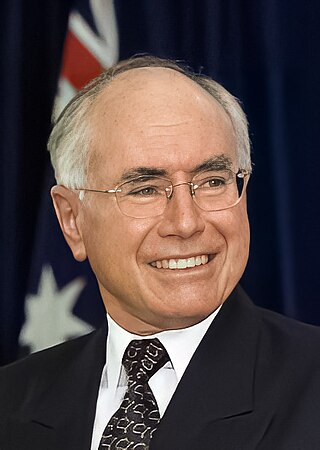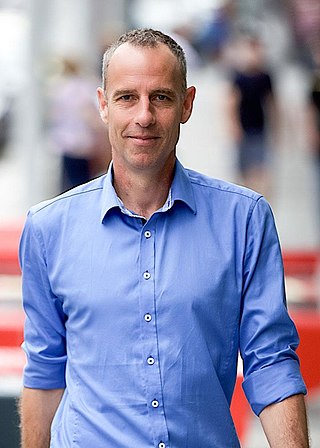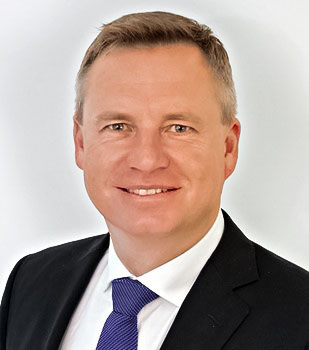
The 2004 Australian federal election was held in Australia on 9 October 2004. All 150 seats in the House of Representatives and 40 seats in the 76-member Senate were up for election. The incumbent Liberal Party of Australia led by Prime Minister of Australia John Howard and coalition partner the National Party of Australia led by John Anderson defeated the opposition Australian Labor Party led by Mark Latham.

The 1996 Australian federal election was held to determine the members of the 38th Parliament of Australia. It was held on 2 March 1996. All 148 seats of the House of Representatives and 40 seats of the 76-seat Senate were up for election. The Liberal/National Coalition led by Opposition Leader John Howard of the Liberal Party and coalition partner Tim Fischer of the National Party defeated the incumbent Australian Labor Party government led by Prime Minister Paul Keating in a landslide victory. The Coalition won 94 seats in the House of Representatives, which is the largest number of seats held by a federal government to date, and only the second time a party had won over 90 seats at a federal election.

The Tasmanian Greens are a political party in Australia which developed from numerous environmental campaigns in Tasmania, including the flooding of Lake Pedder and the Franklin Dam campaign. They form a part of the Australian Greens.
Anthony Maxwell Rundle AO was the Premier of the Australian State of Tasmania from 18 March 1996 to 14 September 1998. He succeeded Ray Groom and was succeeded himself by Jim Bacon. He is a Liberal who held the seat of Braddon between 1986 and 2002. A former journalist, he is married to Caroline Watt. He has twin daughters from his first marriage.

Margaret Ann Putt is a former Australian politician and parliamentary leader of the Tasmanian Greens.

Nicholas James McKim is an Australian politician, currently a member of the Australian Senate representing Tasmania. He was previously a Tasmanian Greens member of the Tasmanian House of Assembly elected at the 2002 election, representing the Franklin electorate from 2002 to 2015, and led the party from 2008 until 2014. On 21 April 2010, he became the first member of the Greens in any Australian ministry. From February 2020 until June 2022, he served as co-deputy leader of the Australian Greens.

An election for the House of Assembly was held in the Australian state of Tasmania on 18 March 2006, the same day as the South Australian elections. The Labor Party led by Premier Paul Lennon, won a third successive majority government term in office, despite predictions the election would result in a minority government. Although there was a small swing against Labor, they finished with 14 seats, and there were no changes in the party composition of the assembly. The Liberal Party led by Rene Hidding gained a small swing and finished with seven seats. The Tasmanian Greens led by Peg Putt suffered a small swing and finished with four seats; meaning no change in seat representation since the last election. Had the Greens lost one of their four seats, they would have lost their status as a major party and would lose financial resources, offices and support staff.

The 2007 New South Wales state election was held on Saturday, 24 March 2007. The entire Legislative Assembly and half of the Legislative Council was up for election. The Labor Party led by Morris Iemma won a fourth four-year term against the Liberal-National coalition led by Peter Debnam.

The 1998 Tasmanian state election was held on Saturday, 29 August 1998 in the Australian state of Tasmania to elect 25 members of the Tasmanian House of Assembly. The number of members was reduced from 35 to 25. The election used the Hare-Clark proportional representation system—five members were elected from each of five electorates. The quota required for election increased from 12.5% to 16.7%.

William Edward Felix Hodgman is a former Australian politician and diplomat. He was the premier of Tasmania from 2014 to 2020 and state leader of the Liberal Party from 2006 to 2020. He later served as High Commissioner of Australia to Singapore from 2021 to 2023.

The 1996 Tasmanian state election was held on 24 February 1996 in the Australian state of Tasmania to elect 35 members of the Tasmanian House of Assembly. The election used the Hare-Clark proportional representation system — seven members were elected from each of five electorates. The quota required for election was 12.5% in each division.

The 2006 Victorian state election, held on Saturday, 25 November 2006, was for the 56th Parliament of Victoria. Just over 3 million Victorians registered to vote elected 88 members to the Legislative Assembly and, for the first time, 40 members to the Legislative Council under a proportional representation system. The election was conducted by the independent Victorian Electoral Commission.
The Labor–Green Accord was a 1989 political agreement between the Labor Party and the Tasmanian Greens to form government in the Australian state of Tasmania after the 1989 general election had resulted in a hung parliament.

Cassandra Stanwell O'Connor is an Australian politician, who was a Tasmanian Greens member of the Tasmanian House of Assembly from 2008 to 2023, representing the electorate of Denison which was renamed to Clark in September 2018. Since the 2024 Tasmanian Legislative Council periodic election, she has represented the electorate of Hobart. O'Connor was the first female Greens minister in Australia, serving in the Giddings ministry intermittently from 2011-14. In 2015, she became leader of the Tasmanian Greens following the resignation of Kim Booth.

The 2010 Tasmanian state election was held on 20 March 2010 to elect members to the Tasmanian House of Assembly. The 12-year incumbent Labor government, led by Premier of Tasmania David Bartlett, won a fourth consecutive term against the Liberal opposition, led by Will Hodgman, after Labor formed a minority government with the support of the Greens.

The 2014 Tasmanian state election was held on 15 March 2014 to elect all 25 members to the House of Assembly. The 16-year incumbent Labor government, led by the Premier of Tasmania Lara Giddings, sought to win a fifth consecutive term in government, but was defeated by the Liberal opposition, led by Opposition Leader Will Hodgman, in a landslide victory. Also contesting the election was the Greens led by Nick McKim. The Palmer United Party made a significant effort in the election.

The 2018 Tasmanian state election was held on 3 March 2018 to elect all 25 members of the Tasmanian House of Assembly.

The 2021 Tasmanian state election was held on 1 May 2021 to elect all 25 members to the Tasmanian House of Assembly.

The Tasmanian Labor Party, officially known as the Australian Labor Party and commonly referred to simply as Tasmanian Labor, is the Tasmanian branch of the Australian Labor Party. It has been one of the most successful state Labor parties in Australia in terms of electoral success.

The 2024 Tasmanian state election was held on 23 March 2024 to elect all 35 members to the House of Assembly.



















